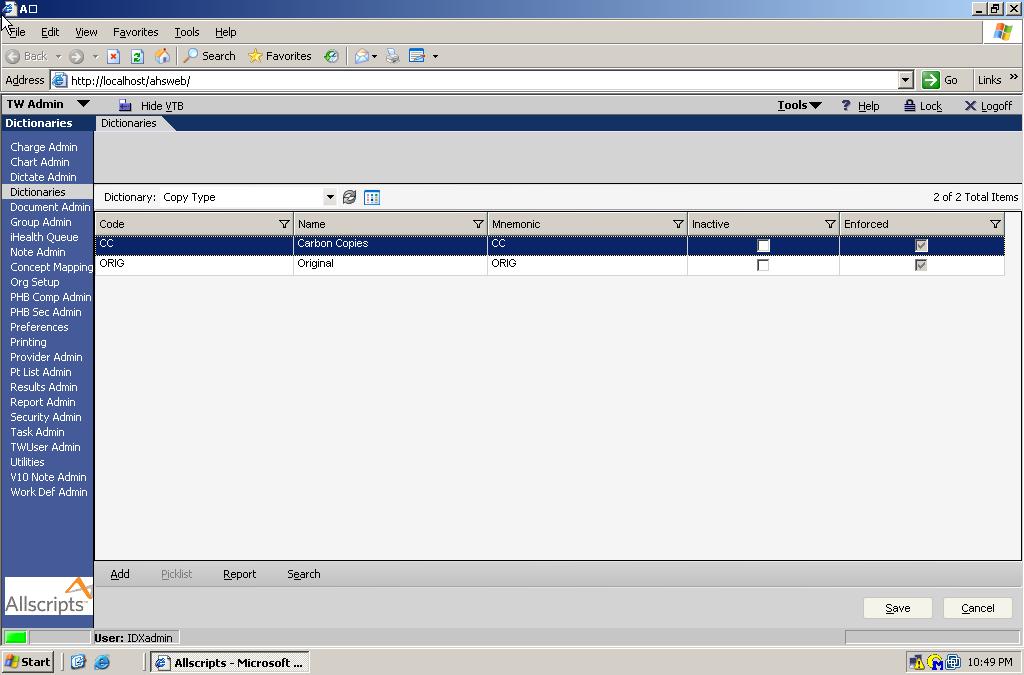Copy Type
Description
The Copy Type dictionary is used to establish different classes of behavior for document output within Auto Print Settings. Auto print settings are the settings that describe the methods available for a document to be distributed: Print or Fax, whether it may print with an envelope. It also describes the servers employed for either printing or faxing as well as, in the case of printing, the printer used and the trays employed. Additionally, the auto print settings also describe the events that trigger the distribution of a document. For each copy type, a separate hierarchy of auto-print settings may be established and configured. For example, you can specify auto-print settings for a given document at the Document Type level, the organization/site level, the document owner level or the home chart location level where each successive level in the hierarchy inherits its settings from the previous level unless overridden. The system installs with two Copy Types (classes of behavior): Original and Carbon Copy. The Original class is typically used for documents intended for a paper chart if it were still in existence. Carbon Copies are distinct from originals in that in order to print, they must have their settings established in Auto Print, but they must also have a recipient specified for them attached to the document that needs to be printed. Any copy types created by the customer will be subject to the same constraints as originals.
Definition
- Code - The Code is a unique identifier that must be supplied. This is not displayed in the product and is used for identification purposes only.
- Name - This is the name that will appear for the end users in the EHR application. This should be unique to prevent confusion.
- Mnemonic - This is not required, but it used as a secondary identifier. This does not appear in the product and unless you have another use for it, the recommendation would be to make this the same as the code.
- Inactive - The inactive flag allows you to inactivate or hide an entry.
- Enforced - The enforced flag designates whether a dictionary item is required and cannot be changed. In most cases, this comes predefined by Allscripts and should not be selected for new entries. If an entry is enforced, it cannot be modified or inactivated.
